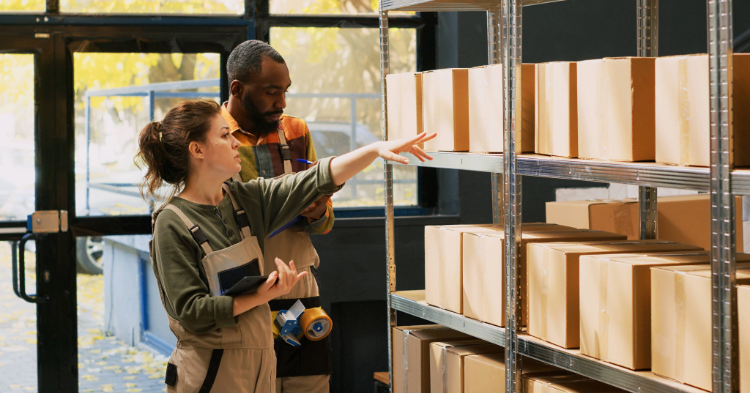Small Business Management: What It Is and How To Do It
Running and managing a small business is never boring. It comes with a unique set of challenges and opportunities, from overseeing financial responsibilities and day-to-day operations to planning for future growth and much more. Whether you’re managing a new business or a company that’s been around for a long time, managing all of these tasks can feel overwhelming. But with the right tools, mindset and strategies, you can successfully lead your small business toward success.
What is small business management?
Small business management is the process of overseeing, and making decisions for, your small business. It can involve things like coordinating human resources, handling bookkeeping and optimizing your marketing strategy.
It also means doing some strategic thinking. You’ll have to keep an eye on market trends and business topics, set long-term goals, and navigate challenges as they arise. It’s an ongoing process that helps refine your business operations and ensures your efforts stay aligned with your business plan.
When managing your business, you’ll probably encounter things like:
Financial management. Tracking cash flow, managing expenses and increasing profitability.
Human resources. Recruiting, training, and retaining the right team.
Operations. Ensuring efficient processes for daily tasks and long-term goals.
Customer relations. Building strong relationships with your clients or customers.
Marketing strategy. Growing your brand through targeted campaigns and market research.
Why do I need a small business management plan?
A small business management plan helps provide structure and can act as a roadmap for your business. Here are a few key benefits of a implementing a management plan:
Improved efficiency. A good plan can help reduce wasted time and resources.
Consistency. A management plan can help you make consistent business improvements and ensure the same level of quality in every aspect of your business.
Easy decision-making. Access to organized and accurate information can help you make better business decisions for your business.
Clear focus. When the details are taken care of, you have more time to focus on the big picture.
Staying prepared. A good plan can help you navigate challenges effectively.
What are some small business management strategies?
No two businesses are alike, but certain management strategies work for most business models. Below are a few key ingredients to help you succeed:
- Set business goals. Setting clear and achievable goals can help you drive your business forward. They can help you ensure that every business decision aligns with your overall vision. With specific and measurable targets you’ll be able to track our progress, make informed decisions and celebrate the milestones along the way.
- Watch your budget. It’s important to make sure your dollars are going where they need. By keeping a close eye on your business budget you can help ensure that you’ll reach your financial goals. It can also help you identify areas of overspending so you can make adjustments as needed.
- Delegate tasks. As a small business owner, you likely have a lot on your plate. As your business grows, it will become essential to delegate responsibilities to reliable team members. This allows them to take ownership of their roles, plus it will help free up some of your time so you can focus on the big picture.
- Establish open communication. Open communication is a management philosophy where you create an environment for information to flow freely between everyone — leaders, managers and employees. It builds trust and ensures everyone knows their roles and responsibilities. When employees are informed, it can help minimize misunderstandings, boost teamwork and foster innovation by allowing employees to freely share ideas and feedback.
- Invest in professional development. Empower your employees by offering opportunities to improve their leadership, knowledge and expertise. A highly skilled team can help you take your business to new heights. When you invest in your employees, your business reaps the benefits as they contribute their new strengths.
- Optimize operations. Beyond having a good operations manual, optimizing your operations means that you can effectively plan, organize and execute business tasks. It also means resources are used cost-effectively, deadlines are met and your team efforts are coordinated. Optimization can also help reduce risk and management issues as you work toward your business goals.
What are the skills needed to successfully manage a small business?
From mastering financial management and nurturing new employees to launching effective marketing plans, there are countless skills to develop when you own your own business. However, focusing on the fundamentals can help you manage a successful business. Here are a few key skills a good manager can hone:
- Leadership and entrepreneurship
- Knowledge of business finances
- Time management
- Communication
- Project management
- Problem-solving
- Networking
These skills can help you in all areas of business administration and create a strong foundation for business growth.
Focus areas for small business management.
Business finances. Financial management involves keeping a close eye on things like budget, profits and cash flow. It’s also important to have a solid understanding of business borrowing. As a financial decision-maker, you’ll need to know the right time to seek additional business funding.
Human resources. Human resource management is essential to maintaining an effective workforce. This includes recruiting and hiring top talent, managing employee relations and benefits and ensuring compliance with labor laws.
Operations. Managing operations helps ensure that your business is running efficiently. This involves hands-on oversight of processes and optimizing resources to get the most out of your time, budget and team
Marketing and sales. Marketing and sales management can help you build a successful business when it’s done well. You don’t have to know the latest trends on social media or spend a ton of money launching an epic marketing campaign to effectively manage your reputation, or to help the marketing and sales teams to work together seamlessly.
Technology. Technology can help you with automation, bookkeeping, project management and more. Managing how and what kind of technology your business uses streamlines processes, reduces human error and saves time. It can help you and your team focus on high-priority, hands-on projects while technology takes care of time-consuming tasks.
Small business management advice from three small business owners.
“Listen to Customers: One key lesson I learned was the importance of listening to customers. Understanding their unique needs and concerns and incorporating their feedback helps us design better clothing that works for them. We send out surveys, collect data from customer service, and even visit senior living communities for feedback on new products.
“Create a Strong Team: Another critical lesson is the value of a strong team. Any business will thrive when it has a group of committed individuals who share the same vision and work well together. Our customer service lead is a former geriatric nurse, while all members of our team have provided care for an older family member.
“Adjust When Needed: Next, being willing to adjust strategies as the market and customer needs evolve is crucial for long-term success. Our pipeline of new products, and our marketing strategies, are not set in stone – we love as a startup the ability to remain nimble and pivot when necessary.
“Nurture Strong Relationships: Lastly, building strong relationships with both customers and partners ensures that a small business can grow sustainably. As a startup, this is so important – we do our best to provide personalized and empathetic support for our customers, while working closely with partners as we grow.”
Ben Graham, VP of Marketing
Joe & Bella
“One key lesson I have learned is the importance of flexibility—being able to pivot when needed, especially in response to unexpected challenges like a global pandemic. My success with Escapely grew from this ability to pivot. When the pandemic hit, I was developing a different product, but immediately adapted my ideas to virtual events, ensuring that the company could continue to serve clients even when in-person activities were not possible.
“Another important lesson is the power of customer feedback. Listening to customers and understanding their needs helps shape everything we do. I read every feedback email personally and respond to many of them myself. All of the changes we have made over the last four years (which have been many) originated from customer and client feedback. Client satisfaction is the most important driving force that keeps customers coming back, so direct feedback is the most powerful tool!
“Next, the leader of a small business must view themselves as a perpetual student. I get my hands dirty learning one aspect of my business until I fully understand it. Only then can I train and delegate those responsibilities to someone else. Then it’s onto the next task, and there is truly no end to the facets of a business that must be learned and mastered.
“Finally, creating a supportive and inclusive company culture is crucial to success. When employees feel passionate about their work and are excited to be part of a team, their work ethic and work output show it.”
Rachel Shiffrin, Founder
Escapely
“My primary lessons from the experience focus on developing robust ties with clients as well as suppliers which have created the biggest influence. I understood from the beginning that maintaining relationships with clients and suppliers creates essential conditions for continuous project intake and resource supply. We have established relationships with suppliers who offer premium quality materials at cost-effective rates that improves our business margins.
“The essential lesson I learned about business operation relates to managing cash flows properly. Your business expansion efforts should not overshadow financial monitoring because insufficient attention to money management could damage your operations. Throughout my first experience with a low season when our cash flow was constrained I became resourceful to maintain operations. Storing a portion of our revenue as a reserve fund has proven to be fundamental. Our financial reserve enabled business growth throughout all market conditions while maintaining constant expansion.
“The ability to adapt to different situations stands as essential knowledge I have acquired. Time brings continuous changes which affect every industry including those devoted to roofing. The company has been able to maintain leadership by adopting advanced technological solutions and modern raw materials and operational methods. Our company’s operational efficiency has increased by 20% since we integrated new equipment combined with operational optimization strategies during the previous five years.”
Daniel Robers, CEO
Lava Roofing
DISCLAIMER: This content is for informational purposes only. OnDeck and its affiliates do not provide financial, legal, tax or accounting advice.
Article Contributors

Ben Graham, VP of Marketing
Ben is the VP of Marketing and Brand at Joe & Bella. Joe & Bella creates premium and stylish adaptive apparel for older adults and others who receive care or are looking for an easier way to get dressed. All of the clothes at Joe & Bella are modified to make dressing easier, safer, pain-free and stress-free.

Rachel Shiffrin, Founder
Rachel is the founder of Escapely, a company that specializes in unforgettable escape game experiences. From outdoor escape rooms for friends and families to virtual and in-person team building events for companies worldwide, Escapely is always innovating. With a deep passion for escape games, Rachel has leveraged her love for puzzles and codes to develop a business that enhances team culture and brings. a new style of fun to the masses!

Daniel Robers, CEO
Daniel Roberts, the CEO of Lava Roofing, brings over three decades of experience in construction, having initially specialized in building handcrafted log homes and later expanding his services to include roofs. His leadership has made Lava Roofing a pillar of trust in the community. Daniel’s commitment to quality and meticulous project management ensures that every roofing project reflects his deep-rooted expertise in craftsmanship.



